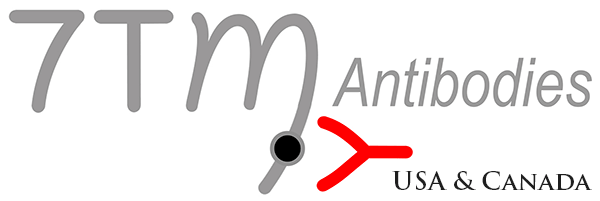No results were found for the filter!
Citations
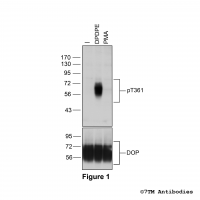 pT361-DOP (phospho-∂-Opioid Receptor Antibody)
pT361-DOP (phospho-∂-Opioid Receptor Antibody) Threonine361 (T361) is a major phosphorylation site of the delta-opioid receptor (DOP). The pT361-DOP antibody detects phosphorylation in response to agonists but not after PKC activation. T361 phosphorylation is a key regulator of DOP...
$ 375.00 *
Citations
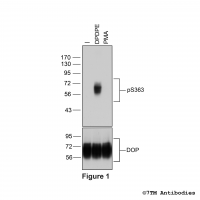 pS363-DOP (phospho-∂-Opioid Receptor Antibody)
pS363-DOP (phospho-∂-Opioid Receptor Antibody) Serine363 (S363) is the primary phosphorylation site in a hierarchical phosphorylation cascade of the delta-opioid receptor (DOP). The pS363-DOP antibody detects phosphorylation in response to high- and low-efficacy agonists but not...
$ 375.00 *
NEW
 DOP (non-phospho) ∂-Opioid Receptor Antibody
DOP (non-phospho) ∂-Opioid Receptor Antibody The non-phospho-∂-opioid receptor antibody is directed against the distal end of the carboxyl-terminal tail of mouse, rat and human DOP. It can be used to detect total DOP receptors in Western blots independent of phosphorylation.
$ 300.00 *
NEW
 pT358/pT361-DOP (phospho-∂-Opioid Receptor...
pT358/pT361-DOP (phospho-∂-Opioid Receptor... Threonine358/Threonine361 (T358/T361) is the primary phosphorylation site in a hierarchical phosphorylation cascade of the delta-opioid receptor (DOP). The pT358/T361-DOP antibody detects phosphorylation in response to high- and...
$ 375.00 *
NEW
 pT361/pS363-DOP (phospho-∂-Opioid Receptor...
pT361/pS363-DOP (phospho-∂-Opioid Receptor... Threonine361/Serine363 (T361/S363) is the primary phosphorylation site in a hierarchical phosphorylation cascade of the delta-opioid receptor (DOP). The pT361/pS363-DOP antibody detects phosphorylation in response to high- and...
$ 375.00 *
SAMPLE PACK
 MOP Sample Pack (phospho- and...
MOP Sample Pack (phospho- and... MOP Sample Pack consisting of all four available phospho- and one non-phospho-µ-Opioid Receptor Antibodies 5 x 20 µL trial size each. Specifically, this sample pack contains the following antibodies pT370-MOP (7TM0319B), pS375-MOP...
$ 300.00 *
Citations
KO-Validated
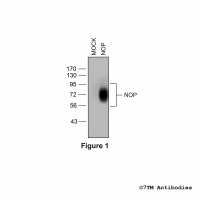 NOP (non-phospho), Nociceptin/Orphanin FQ...
NOP (non-phospho), Nociceptin/Orphanin FQ... The non-phospho-NFQ receptor (NOP) antibody is directed against the distal end of the carboxyl-terminal tail of mouse, rat and human NOP. It can be used to detect total NOP receptors in Western blots independent of phosphorylation. The...
$ 300.00 *
Citations
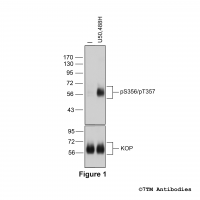 pS356/pT357-KOP (phospho-κ-Opioid Receptor...
pS356/pT357-KOP (phospho-κ-Opioid Receptor... Serine356/Threonine357 is a major phosphorylation site of the kappa-opioid receptor (KOP). The pS356/pT357-KOP antibody detects phosphorylation in response to agonists as well as after PKC activation. S356/T357 phosphorylation is a key...
$ 375.00 *
Citations
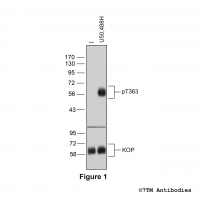 pT363-KOP (phospho-κ-Opioid Receptor Antibody)
pT363-KOP (phospho-κ-Opioid Receptor Antibody) Threonine363 is a major phosphorylation site of the kappa-opioid receptor (KOP). The pT363-KOP antibody detects phosphorylation in response to high-efficacy agonists. T363 phosphorylation is a key regulator of KOP desensitization,...
$ 375.00 *
Citations
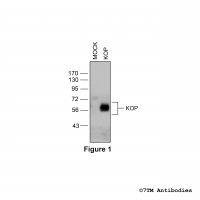 KOP (non-phospho) κ-Opioid Receptor Antibody
KOP (non-phospho) κ-Opioid Receptor Antibody The non-phospho-kappa-opioid receptor antibody is directed against the distal end of the carboxyl-terminal tail of mouse, rat and human KOP. It can be used to detect total KOP receptors in Western blots independent of phosphorylation.
$ 300.00 *
Citations
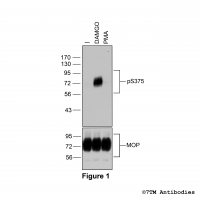 pS375-MOP (phospho-µ-Opioid Receptor Antibody)
pS375-MOP (phospho-µ-Opioid Receptor Antibody) Serine375 (S375) is the primary phosphorylation site in a hierarchical phosphorylation cascade. The pS375-MOP antibody detects phosphorylation in response to high- and low-efficacy agonists but not after PKC activation. S375...
$ 375.00 *
Citations
KO-Validated
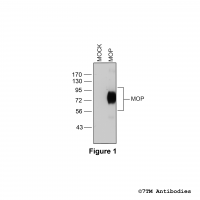 MOP (non-phospho), µ-Opioid Receptor Antibody
MOP (non-phospho), µ-Opioid Receptor Antibody The non-phospho-µ-opioid receptor antibody is directed against the distal end of the carboxyl-terminal tail of mouse, rat and human MOP. It detects selectively the canonical form of MOP and none of the putative splice variants. It can be...
$ 375.00 *
Citations
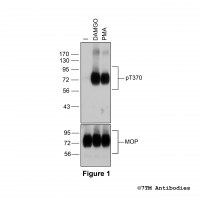 pT370-MOP (phospho-µ-Opioid Receptor Antibody)
pT370-MOP (phospho-µ-Opioid Receptor Antibody) Threonine370 (T370) is a major phosphorylation site of the µ-opioid receptor (MOP). The pT370-MOP antibody detects phosphorylation in response to high-efficacy agonists but to low-efficacy agonists. The pT370-MOP antibody also detects...
$ 375.00 *
Citations
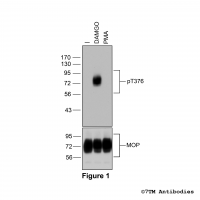 pT376-MOP (phospho-µ-Opioid Receptor Antibody)
pT376-MOP (phospho-µ-Opioid Receptor Antibody) Threonine376 (T376) is a major phosphorylation site of the µ-opioid receptor (MOP). The pT376-MOP antibody detects phosphorylation in response to high-efficacy agonists but to low-efficacy agonists or after PKC activation. T376...
$ 375.00 *
Citations
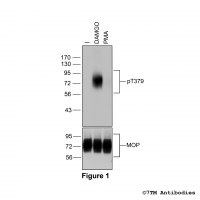 pT379-MOP (phospho-µ-Opioid Receptor Antibody)
pT379-MOP (phospho-µ-Opioid Receptor Antibody) Threonine379 (T379) is a major phosphorylation site of the µ-opioid receptor (MOP). The pT379-MOP antibody detects phosphorylation in response to high-efficacy agonists but to low-efficacy agonists or after PKC activation. T379...
$ 375.00 *
Citations
 pS363-MOP (phospho-µ-Opioid Receptor Antibody)
pS363-MOP (phospho-µ-Opioid Receptor Antibody) Serine363 (S363) is a constitutive phosphorylation site of the µ-opioid receptor (MOP). The pT363-MOP antibody detects phosphorylated MOP in cultured cells. S363 is a substrate for PKC-mediated phosphorylation.
$ 375.00 *
Recently viewed
